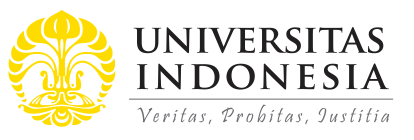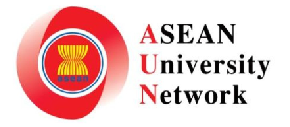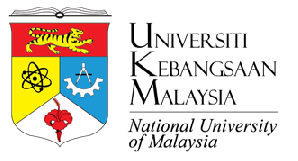
Abstract
Using community involvement as a lens, this study analyzed the amount of distribution and utilization of a public higher education institution's research outputs in Bicol, Philippines. The Diffusion and Dissemination Theory alongside the use of Knowledge For health (K4Health) of the United States Agency for. International Development (USAID) Model served as the theoretical and conceptual underpinnings of this study that facilitated the analysis of research produced by the institution, its dissemination, the enablers, and barriers, and until utilization. The case study design was used to portray an in-depth analysis of the institution’s situation from research output generation to the enablers and barriers to research utilization. The analysis of graduate student and faculty research revealed a predominance of quantitative descriptive study on the issue of “research in aid of policies.” Documentary evidence on research outputs utilized in policies, programs, and projects is minimal. For the faculty, the enablers on research utilization are promotions and incentives while for the graduate students it is a provision of better library services and research resources. The faculty considered personal and professional issues as barriers while the graduate students cited accessibility of resources, access policies, and professional/work-related issues. Overall, the utilization of research in the institution characterizes Conceptual Research Utilization (CRU) only. In conclusion, the overall dissemination and utilization of research are still beset with leadership, management, access to dissemination tools, research resources, and researcher motivation issues. Due to insufficient attention being placed on research applications to capacitate and empower the community, the approach contributed to low research output utilization. It is suggested that the proposed action plan based on the findings of this study be implemented.
References
Benneworth P., Charles D., Hodgson C., & Humphrey, L. (2013). The Relationship of Community Engagement with Universities' Core Missions In University Engagement with Socially Excluded Communities. Springer, Dordrecht. https://doi.org/10.1007/978-94-007-4875-0_5
CARE. (2014). Module 5: Disseminating the Research Findings, Implementation Research Toolkit Workbook. Netherlands: World Health Organization.
Chan, L., & Costa, S. (2005). Participation in the global knowledge commons: challenges and opportunities for research dissemination in developing countries. New Library World, 106(3/4), 141-163. https://doi.org/10.1108/03074800510587354
Chavkin, N., & Chavkin, A. (2008). Promising Website Practices for Disseminating Research on Family - school Partnership to the Community. The School Community Journal, 79-92. https://eric.ed.gov/?id=EJ798682
Civil Service Commission. (2012). SPMS. https://www.csc.gov.ph
Commission on Higher Education. (2009). National Higher Education Research Agenda (NHERA) 2. https://ched.gov.ph/wp-content/ uploads/2017/11/NHERA-2.pdf
Dearing, J. W. (2008). Evolution of Diffusion and Dissemination Theory. Journal of Public Health Management Practice, 14(2), 99-108.
https://doi.org/10.1097/01.PHH.0000311886.98627.b7
DEBESMSCAT. (2007). Research and Development Manual. Dr. Emilio B. Espinosa, Sr. Memorial State College of Agriculture and Technology
Department of Science and Technology. (2017). Harmonized National R & D Agenda 2017. DOST. http://www.dost.gov.ph/knowledge-resources/downloads/file/791- harmonized-national-r-d-agenda-2017-2022.html
ESRC. (2018). What are the ethical considerations of disseminating findings? Economic and Social Research Council. https://esrc.ukri.org/funding/guidance-for-applicants/research-ethics/frequently-raised-questions/what-are-the-ethical-considerations-of-disseminating
Foss, J. E., Kvigne, K., Larsson, B. W., & Athlin, E. (2014). A model (CMBP) for collaboration between university college and nursing practice to promote research utilization in students' clinical placements: A pilot study. Nurse Education in Practice, 14(4), 396-402. https://doi.org/10.1016/j.nepr.2013.11.008
Gagnon, M. L. (2011). Moving knowledge to action through dissemination and exchange. Journal of Clinical Epidemiology, 64(1), 25-31.
https://doi.org/10.1016/j.jclinepi.2009.08.013
Girard, J. P. (2020). KM Defined. http://www.johngirard.net/
Huber, A. (2018). Exploring Interior Designers’ Research Utilization Strategies and Information-Seeking Behaviors. Journal of Interior Design, 43, 11-31.
https://doi.org/10.1111/joid.12119
Hulme, P. (2010). Cultural Considerations in Evidence-based Practice. Journal of Transcultural Nursing, 21(3), 278-280.
https://doi.org/10.1177/1043659609358782
Johnston, R., & Plummer, P. (2005). Commentary. Environment and Planning A: Economy and Space, 37(9), 1521–1526. https://doi.org/10.1068/a3845
Landry, R., Amara, N., & Lamari, M. (2001). Climbing the ladder of research utilization: Evidence from social science research. Science Communication, 22(4), 396-422. https://doi.org/10.1177/1075547001022004003
Newman, J., Cherney, A., & Head, B. W. (2016). Do Policy Makers Use Academic Research? Reexamining the “Two Communities” Theory of Research Utilization. Public Admin Review, 76, 24-32. https://doi.org/10.1111/puar.12464
Ofi, B., Sowunmi, L., Edet, D., & Anarado, N. (2008). Professional nurses’ opinion on research and research utilization for promoting quality nursing care in selected teaching hospitals in Nigeria. International Journal of Nursing Practice, 14(3), 243-255. https://doi.org/10.1111/j.1440-172X.2008.00684.x
Robinson-Pant, A., & Singal, N. (2020), Beyond authorship and accountability? The ethics of doctoral research dissemination in a changing world. British Educational Research Journal, 46, 859-877. https://doi.org/10.1002/berj.3590
Scimago Lab. (2018). Scimago Journal and Country Rank. https://www.scimagojr.com
Shankland, L., Wackwitz, J., & Moses-Egan, C. (2010). Linking Research and Practice. SEDL: American Institutes for Research. http://www.sedl.org/pubs/sedl-letter/v22n02/SEDLLetter_v22n02.pdf
Shenton, A. (2010). Strategies for ensuring trustworthiness in qualitative research projects. Newcastle upon Tyne: ISO Press.
Song, F., Parekh, S., Hooper, L., Loke, Y. K., Ryder, J., Sutton, A. J., Hing, C., Kwok, C. S., Pang, C., & Harvey, I. (2010). Dissemination and publication of research findings: an updated review of related biases. Health Technology Assessment, 14(8), 1-220. https://doi.org/10.3310/hta14080
Squires, J. E., Estabrooks, C. A., Gustavsson, P., & Wallin, L. (2011). Individual determinants of research utilization by nurses: a systematic review update. Implementation Science, 6(1), 1-20. https://doi.org/10.1186/1748-5908-6-1
Strandberg, E., Catrine Eldh, A., Forsman, H., Rudman, A., Gustavsson, P., & Wallin, L. (2014). The concept of research utilization as understood by Swedish nurses: demarcations of instrumental, conceptual, and persuasive research utilization. Worldviews on Eevidence-based Nursing, 11(1), 55-64.
https://doi.org/10.1111/wvn.12013
Tabak, R. G., Reis, R. S., Wilson, P., & Brownson, R. C. (2015). Dissemination of health-related research among scientists in three countries: access to resources and current practices. BioMed Research International, 2015.
http://dx.doi.org/10.1155/2015/179156
Tilbury, C., Hughes, M., Bigby, C., Fisher, M., & Vogel, L. (2017). A comparative study of Australian social work research. The British Journal of Social Work, 47(8), 2217-2237. https://doi.org/10.1093/bjsw/bcw135
Tsai, S. L. (2003). The effects of a research utilization in-service program on nurses. International Journal of Nursing Studies, 40(2), 105-113.
https://doi.org/10.1016/S0020-7489(02)00036-6
Turpin, T., & Krishna, V. V. (Eds.). (2007). Science, technology policy and the diffusion of knowledge: Understanding the dynamics of innovation systems in the Asia Pacific. Edward Elgar Publishing.
USAID K4Health Program. (2016). Research Utilization Toolkit. United States Agency for International Development Knowledge for Health Program. https://www.k4health.org/toolkits/
Wade, A., & Demb, A. (2009). A conceptual model to explore faculty community engagement. Michigan Journal of Community Service Learning, 15(2), 5-16.
https://eric.ed.gov/?id=EJ859461
Williams, B., Entwistle, V., Haddow, G., & Wells, M. (2008). Promoting research participation: why not advertise altruism?. Social Science & Medicine, 66(7), 1451-1456. https://doi.org/10.1016/j.socscimed.2007.12.013
Weißhuhn, P., Helming, K., & Ferretti, J. (2018). Research impact assessment in agriculture—A review of approaches and impact areas. Research Evaluation, 27(1), 36-42. https://doi.org/10.1093/reseval/rvx034
World Bank. (2015). Research and Development Expenditure (% of GDP) World Map.
https://data.worldbank.org/indicator/GB.XPD.RSDV.GD.ZS ?end=2015 &start =2015&view=map
Zainal, Z. (2007). Case study as a research method. Jurnal Kemanusiaan, 5(1).
https://jurnalkemanusiaan.utm.my/index.php/kemanusiaan/article/view/165
Recommended Citation
Clores, Vincent M.
(2021).
Higher Education Institution Research Dissemination and Utilization through the Lens of Community Engagement.
ASEAN Journal of Community Engagement, 5(2), 315-334.
Available at: https://doi.org/10.7454/ajce.v5i2.1139
Included in
Educational Assessment, Evaluation, and Research Commons, Educational Leadership Commons







